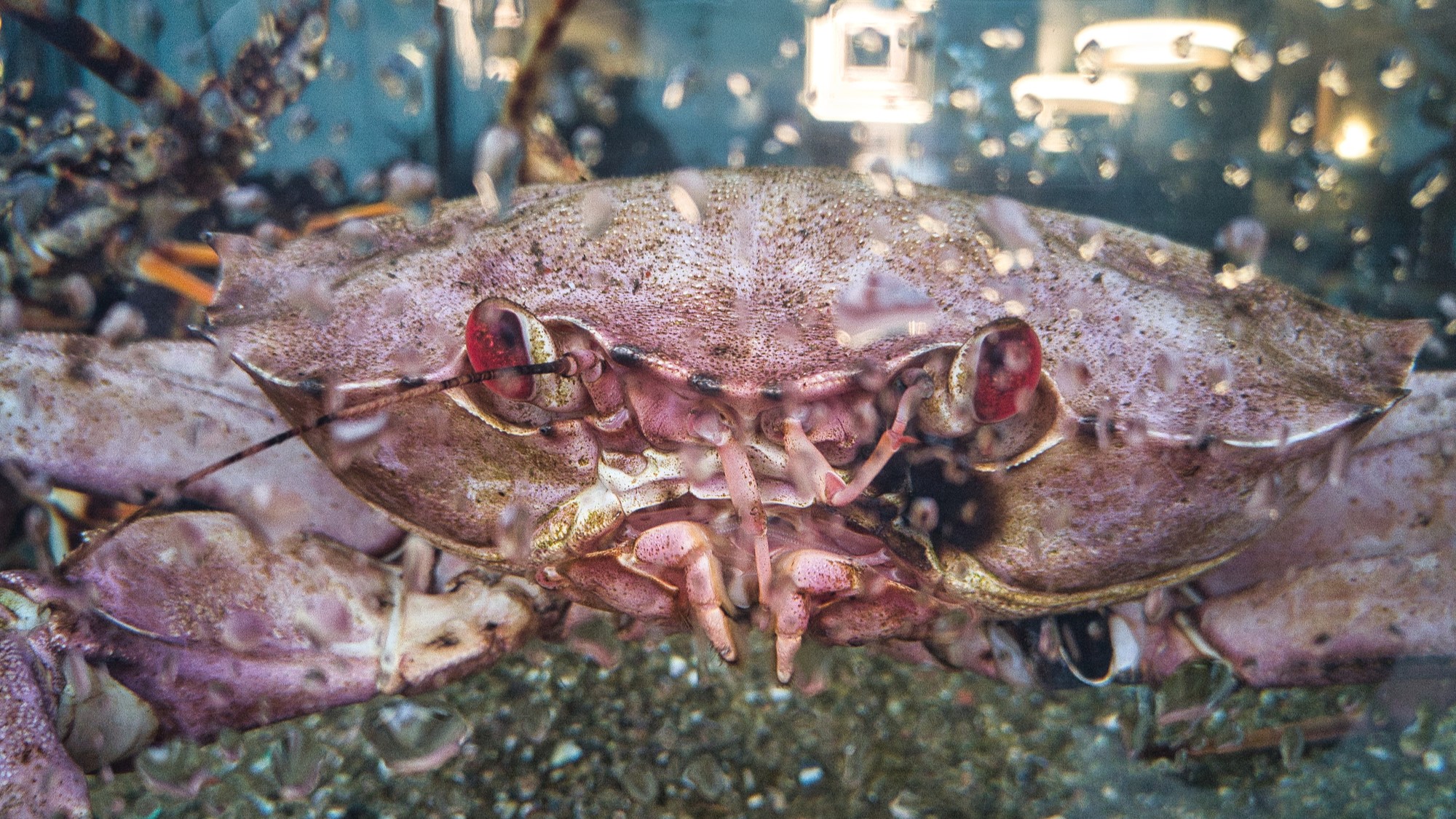More than 10 billion snow crabs starved to death off the coast of Alaska. But why?
A large population of snow crabs in the eastern Bering Sea collapsed after a marine heat wave in 2018 and 2019 that multiplied the crabs' caloric needs and drove them to starvation.

More than 10 billion snow crabs recently vanished from the Bering Sea, and now we know why: They fell victim to one of the biggest marine heat wave die-offs on record, new research shows.
The deadly heat wave, which struck polar waters between Alaska and Siberia in 2018 and lasted for two years, triggered record-high ocean temperatures and historic declines in sea ice. These "unprecedented" circumstances brought a large population of snow crabs (Chionoecetes opilio) living in the eastern Bering Sea to its knees, according to a new study, published Thursday (Oct. 19) in the journal Science.
"The collapse of the snow crab population was a strong response to a marine heatwave," researchers wrote in the study. Rather than succumbing directly to warm ocean temperatures, however, it appears the crabs died of starvation.
Snow crabs are small, round-shelled crustaceans that can live for up to 20 years on soft seabeds that are less than 650 feet (200 meters) deep, according to the National Oceanic and Atmospheric Administration (NOAA). The species is closely monitored and managed in the eastern Bering Sea due to its commercial value as seafood.
Related: Why do animals keep evolving into crabs?
Scientists first noticed a dramatic drop in the number of snow crabs during a survey in 2021, which "found the fewest snow crab on the eastern Bering shelf since the survey began in 1975," researchers wrote in the study. No survey was conducted in 2020 due to the coronavirus pandemic, which is why scientists only noticed the crabs had disappeared the following year. But until now, the cause of the population collapse remained a mystery.
It turns out that warm water temperatures caused by the heat wave probably affected the metabolism of the crabs and increased their caloric needs, according to the study. Previous research conducted in a laboratory found that snow crabs' energy requirements doubled when water temperatures rose from 32 degrees to 37.4 degrees Fahrenheit (0 degrees to 3 degrees Celsius). This jump in temperature is equivalent to the change experienced from 2017 to 2018 by juvenile snow crabs, which live in frigid waters known as the "cold pool" and migrate to warmer spots as they mature, according to the study.
Sign up for the Live Science daily newsletter now
Get the world’s most fascinating discoveries delivered straight to your inbox.
Snow crabs' increased caloric needs were reflected by a change in body size between 2017 and 2018, with smaller crabs caught during a survey after the heat wave had begun, according to the study.
The snow crabs also fell victim to bad timing. Right around the time of the heat wave, the crab population in the eastern Bering Sea had boomed, according to the study. The combination of more crabs and higher caloric needs proved deadly.
Other factors — such as predation by Pacific cod (Gadus macrocephalus), cannibalism of smaller crabs by larger ones, fishing and disease — likely contributed to the mortality event, but "temperature and population density were the key variables in the recent collapse," they added.
The effects of rapidly rising ocean temperatures and more frequent heat waves in response to climate change are difficult to predict, researchers wrote in the study, but the snow crab die-off is "a prime example for how quickly the outlook can change for a population."
And while the future of snow crabs in the eastern Bering Sea is now "precariously uncertain" as they haven't recovered from the mortality event, the population may eventually find refuge in colder waters further north. How the mass death might affect the wider ecosystem remains unclear.
"The problems currently faced in the Bering Sea foreshadow the problems that will need to be confronted globally," the researchers wrote. "The disappearance of snow crab will be a staggering blow to the functioning of some communities in rural Alaska, such as those on St. Paul Island, which rely strongly on the revenue derived from the capture and processing of snow crab."

Sascha is a U.K.-based staff writer at Live Science. She holds a bachelor’s degree in biology from the University of Southampton in England and a master’s degree in science communication from Imperial College London. Her work has appeared in The Guardian and the health website Zoe. Besides writing, she enjoys playing tennis, bread-making and browsing second-hand shops for hidden gems.









